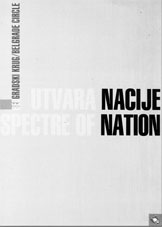

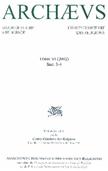
This study is a new attempt of reading the rich theological debates of the fourth century, which designed in different ways the Christian Creed of Nicaea (325) and Constantinople (381), focusing more especially the debate between the radical Arians (epitomized by Aetius and Eunomius) and the defenders of orthodoxy (represented at best by St Basil of Caesarea and St Gregory of Nyssa). By a short presentation of the struggle for orthodoxy during the forth century, I try to place St Gregory of Nyssa’s polemics with the radical Arians into a historical context. Subsequently, I pay attention to Aetius’ legacy in Eunomius’ works and biography, and their strong breaking points with the former tradition. The argument is carried on by a short presentation of Gregory’s explicit rejection of Eunomius’ theology. Consequently, I ponder upon the differences between the conflicting methodologies assumed by Eunomius and Gregory of Nyssa, respectively. The usage of rhetoric and dialectics for theological purposes is, in each case, highly significant. In contrast, I point out the importance of Basil and Gregory’s doctrinal and spiritual commitments, which I regard in continuity with the apostolic confession of Christ as ‘Lord and God’ (John 20: 24). I suggest that the Trinitarian controversy can be ultimately traced back to the most important question for the early Christian Church: the confession of Christ’s divinity and lordship. The present study also try to show that this confession is intimately related to the hermeneutical task of reading the Scriptures, which can always (and very easily) become an object of controversy when the ‘hypothesis’ of Christ’s natural sonship is lost on the way. Without this ‘hypothesis’, the texts of the Old and the New Testament were open to endless and polemical interpretations, and the borderline between ‘orthodoxy’ and ‘heresy’ is lost.
More...
Keywords: etymology; diachrony; language contact; areal linguistics; linguistic history
Morphological developments of Indo-European languages are known, but not formulated as laws: the loss of dual, of some cases and of the neuter, the change of root stems into the class of vocalic stems, the loss of the subjunctive, and the convergence of perfect and aorist, the replacement of the synthetic mediopassive by analytic categories. The established criteria of the kinship between related language families or of the degree of kinship between two languages or within a group are morphological and lexical commonalities. Whereas lexemes are often borrowed, idioms are borrowed only between closely related languages. Grammatical categories can be created corresponding to patterns of neighbouring languages. Phonological borrowings are rare.
More...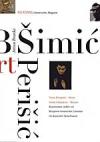
„Der Krieg ist kein Spaß wie in schlechten Filmen im Stile von „Genosse, du bist ja verletzt! Macht nichts Genossin, nur ein Kratzer...“ Oder Schickimicki- Typen in Cafés mit einer zwei tausend Mark teueren Pistole im Gürtel“ – das ist die bittere Erkenntnis, die der Erzähler des Romas „Kad magle stanu“ (Wenn die Nebel schweben) ganz am Ende ausspricht, nach der eingetretenen Ernüchterung, durch die auf der eigenen Haut erlittene Erfahrung des kroatisch-muslimischen Krieges, Erfahrung von Gefängnis, Krankenhaus, Flucht und einer psychiatrischen Behandlung. All diese „Dimensionen“ des Krieges, direkt an und hinter der Frontlinie, behandelt auf eine spezifische Art und Weise der Roman von Josip Mlakić, der beim Wettbewerb des Zagreber Verlags Faust Vrančić den ersten Preis unter zweiundzwanzig eingesandten Manuskripten gewonnen hat.
More...Keywords: Neural Theory of Language; Neural Theory of Metaphor; Artificial Intelligence; Embodied Construction Grammar
The paper first gives an overview of theories and research directions that have influenced the formation of the neural theory of language and thought: objectivism, cognitivism, functionalism (strong AI vs. embodied AI), categorization, embodied cognition, mirror neurons discovery, Hebbian learning, Spike–Time–Dependent Plasticity. Then, an overview of the key theoretical assumptions and concepts of neural theory of language and thought is provided: the relationship between neural theory of language and cognitive linguistics, J. Feldman’s simulation semantics, types of neural networks, and Embodied Construction Grammar. Finally, attention is directed to metaphor and metaphorical thought in the context of this theory by providing a brief overview of the basic assumptions of neural theory of metaphor.
More...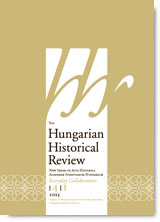
Legacies of Violence. Eastern Europe’s First World War. Edited by Jochen Böhler, Włodzimierz Borodziej, and Joachim von Puttkamer. Reviewed by Rudolf Kučera Nép, nemzet, zsidó [Folk, Nation, Jew]. By Gábor Gyáni. Reviewed by Ferenc Laczó Propaganda State in Crisis: Soviet Ideology, Indoctrination, and Terror under Stalin, 1927–1941. By David Brandenberger. Reviewed by Balázs Apor A magyar népi mozgalom története: 1920–1990 [History of the Hungarian Populist Movement: 1920–1990]. By István Papp. Reviewed by Ákos Bartha Magyar idők a Felvidéken 1938–1945. Az első bécsi döntés és következményei [Hungarian Times in the Upper Lands, 1938–1945. The First Vienna Award and its Consequences]. By Attila Simon. Reviewed by Veronika Gayer Imposing, Maintaining, and Tearing Open the Iron Curtain: The Cold War and East-Central Europe, 1945–1989. Edited by Mark Kramer and Vít Smetana. Reviewed by Zoltán Sz. Bíró Fabricating Authenticity in Soviet Hungary. The Afterlife of the First Hungarian Soviet Republic in the Age of State Socialism. By Péter Apor. Reviewed by Adam Hudek The Collectivization of Agriculture in Communist Eastern Europe. Comparison and Entanglements. Edited by Constantin Iordachi and Arnd Bauerkämper. Reviewed by Róbert Balogh Secrets and Truths: Ethnography in the Archive of Romania’s Secret Police. By Katherine Verdery. Reviewed by Caterina Preda
More...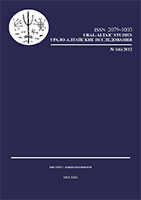
Keywords: word accent; stress; Selkup dialects; field researches; archive material
The article deals with the description of the accent systems of six Selkup dialects on the basis of A. P. Dulzon’s archive material, field researches and the language of the first Selkup books. The full material on the accent place in derivatives and the accent markings of word roots in each of the idioms is given in the article. It is showed in the article that in the southern and central Selkup dialects the accent was phonologically significant and paradigmatic.
More...
Keywords: Sander L. Gilman; anti-Semitism; anti-Judaism; outsiders’ self-hatred; stereotype; image; self-image
The present paper constitutes the first part of the analysis of Sander L. Gilman’s famous book Jewish Self-Hatred, and the pioneering interpretation of the concept of stereotype. According to Gilman, a stereotype emerges as a result of an active collaboration of the person who stereotypises and the outsider. The latter opposes the image imposed by the stereotype, and thus splits the stereotype into a positive and a negative part. By identifying himself with the positive part, the outsider delegates the purity of classification not only to the subgroup he does not feel any attachment to, but also involuntarily legitimises the stereotype, because without his authorisation, the stereotype would merely remain a racist insult. The article is based on the narrations of Jewish converts to Christianity from the Middle Ages to the 15th century.
More...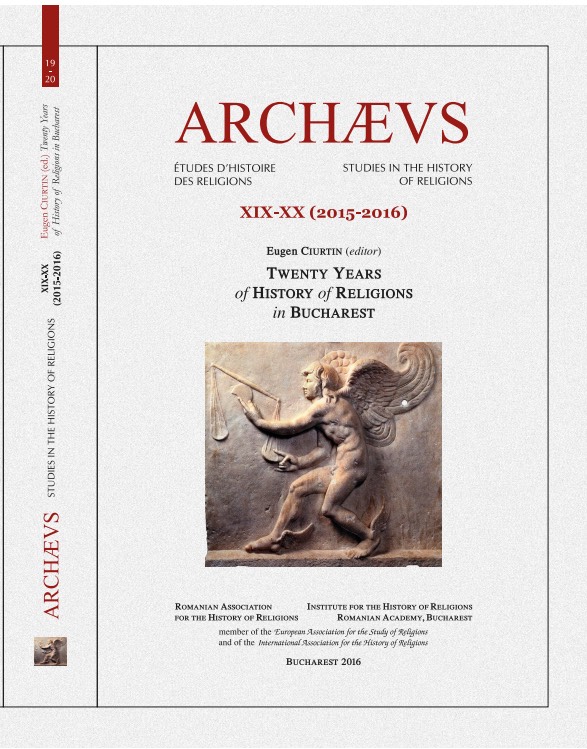
Keywords: Kairos; occasion; epigramm; rhetorics; Lysippos; Callistratus; Otranto; Erwin Panofsky; Aby Warburg; Macchiavelli
A complex concept that even Cicero found difficult to translate, the Greek term kairos expresses an idea of ‘grasping the right moment’, which travelled through art, literature, and philosophy. This article explores the artistic reception of this complex notion in the visual arts by bringing insights from Nachleben and classical reception studies, iconology and anthropology together. The essay brings together the hitherto largely disconnected ‘textual’ and ‘visual’ research traditions about kairos in order to explore, more systematically than has been attempted before, the Nachleben of this motif in the visual realm with specific attention to the transformation processes it underwent (such as Latinization, re-gendering, etc.). As the figure of kairos has been interpreted variously throughout history, from antiquity to the modern era, this research line problematizes the widespread idea that iconographies are essentially stable and static.
More...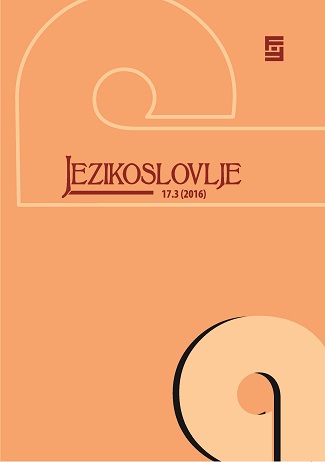
Keywords: metaphor; metonymy; image schemata; cultural models; MENTAL INSTABILITY;
The present paper examines the conceptualization of MENTAL INSTABILITY in Croatian within the (following) postulates of Cognitive Lingustics: metaphor, metonymy, image schemata and cultural models. Metaphorical linguistic expressions are divided into five main categories that are fundamental in the analysis of motivation. In the analyses particularly noteworthy is the HEAD category as the location of MENTAL (IN)STABILITY in cultural model of Western tradition (Croatian language). The analysis highlights BALANCE image schemata, respectively metonymy IMBALANCE FOR MENTAL INSTABILITY as well as NON PROTOTYPICAL BEHAVIOUOR FOR MENTAL INSTABILITY (as a result/effect of MENTAL INSTABILITY). The highest intensity of MENTAL INSTABILITY is shown by the metaphorical linguistic expressions from PEOPLE (HUMAN) category.
More...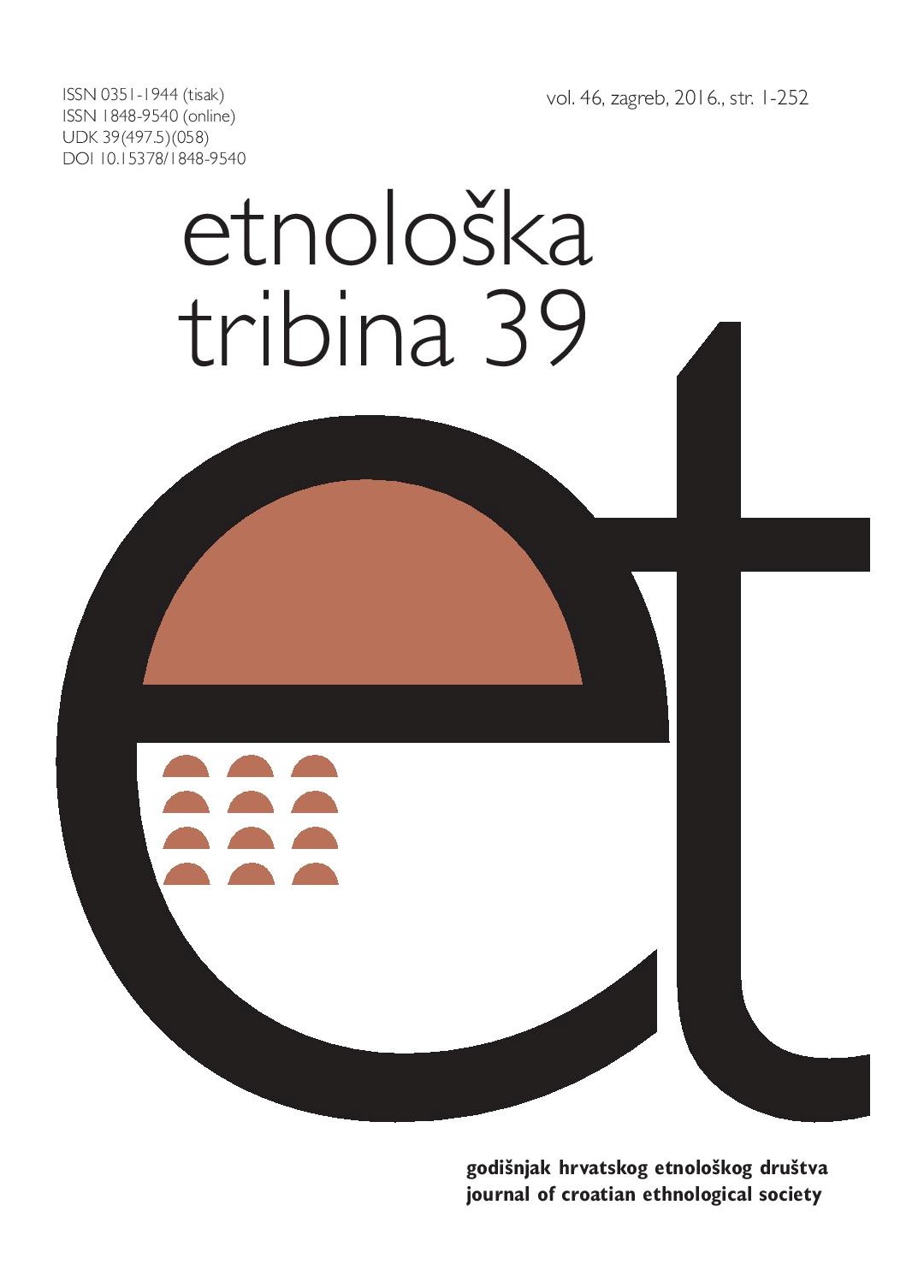
Keywords: language policy; activism; linguistic anthropology; Croatia;
This paper focuses on language policy and social changes which have taken place in Croatia during and since the 1991-5 war. I first describe the historical background, the war and the nineties being marked by excesses of linguistic purism and prescriptivism, alongside the formation of post-Yugoslav states in which national belonging was key to defining citizenship. Through examining the relationship between changing linguistic and social orders, I raise a number of issues for discussion. I argue that the legal framework of minority language rights has consolidated and legitimated a nationalist imaginary, increasing social divisions and reinforcing hierarchies asserted by some nationalists between national categories. For this reason, I suggest that the uncritical endorsement of or promotion of linguistic diversity can be dangerous. Second, in an activist-anthropological vein, I discuss possible reasons why academics trained in the social sciences and humanities have rarely participated in sociolinguistic debates concerning the new Croatian standard. I suggest such discussions could greatly benefit from interventions by social scientists, so as to bring sociolinguistics into contact with other strands of the social sciences and humanities and move away from what I believe to be a problematic policy focus on "identity".
More...
Keywords: language policy; activism; linguistic anthropology; Croatia;
This paper focuses on language policy and social changes which have taken place in Croatia during and since the 1991-5 war. I first describe the historical background, the war and the nineties being marked by excesses of linguistic purism and prescriptivism, alongside the formation of post-Yugoslav states in which national belonging was key to defining citizenship. Through examining the relationship between changing linguistic and social orders, I raise a number of issues for discussion. I argue that the legal framework of minority language rights has consolidated and legitimated a nationalist imaginary, increasing social divisions and reinforcing hierarchies asserted by some nationalists between national categories. For this reason, I suggest that the uncritical endorsement of or promotion of linguistic diversity can be dangerous. Second, in an activist-anthropological vein, I discuss possible reasons why academics trained in the social sciences and humanities have rarely participated in sociolinguistic debates concerning the new Croatian standard. I suggest such discussions could greatly benefit from interventions by social scientists, so as to bring sociolinguistics into contact with other strands of the social sciences and humanities and move away from what I believe to be a problematic policy focus on "identity".
More...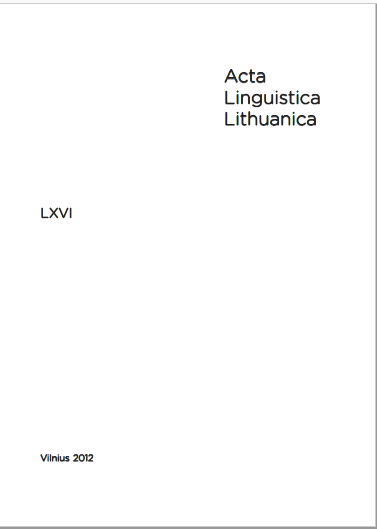
Keywords: Indo-European linguistics; onomastics; Old-European hydronymy; hydronyms; laryngeal theory; Indo-European phonemic system; historical morphology; loan words;
The etymological research in hydronyms pertaining to the so called ‘Old-European hydronymy’ has been done since its beginnings in the 1940ies and 1950ies by Hans Krahe in the same, methodologically unchanged way. The kind of historical-comparative or Indo-European linguistics applied in this research is actually the kind that was used already before World War II . The new methodological approaches, especially in phonology and morphology, which have been developed in Indo-European linguistics in the last half century or so and the changes in the way things are seen in these fields that came along with these new approaches have been largely ignored by the protagonists of Old-European hydronymy research. This article wants to show on the one hand on the examples of the hydronyms Save, Drau, Isar and related names how many more things can be said about these hydronyms, when modern Indo-European linguistics instead of pre-war linguistics is applied. And on the other hand it will show that modern methodology can also lead to a point, where old certainties have to be discarded.
More...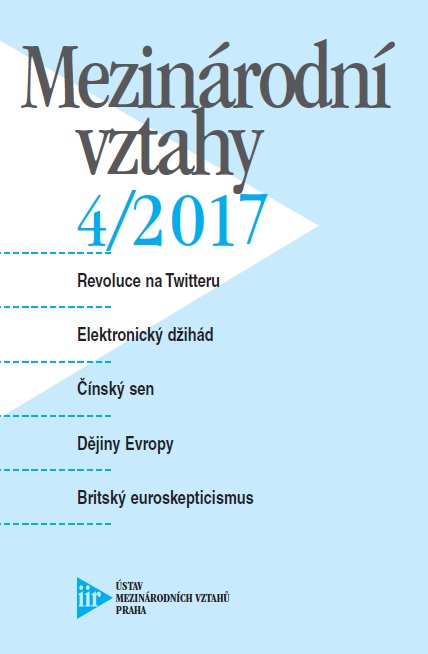
Keywords: revolution;Egypt;grounded theory;Twitter;discourse;political cultures of opposition;dignity;secular nationalism
This qualitative empirical study deals with the Egyptian revolutionary discourse published on Twitter by the revolutionaries from the so-called Facebook generation during the January 25th revolution. Their Twitter accounts have been analysed using methods based on grounded theory. As a result, nine general categories that they work with have been identified (nationalism, pan-Arabism, historical mission, national unity, national polarization, moral superiority, civil society, Mubarak as a scapegoat, and uncertainity). We also identified the relations among them and the main general categories of the discourse: secular nationalism, dignity and empowerment. The framing of the revolutionary action in terms of secular nationalism and dignity (empowerment) has motivated the revolutionaries. These two narratives provided powerful meanings for their actions and repertoires of contention, which would be highly improbable without such a framing. At the same time such narratives represent a culture of resistance rather than a coherent ideology. The revolutionaries’ culture of resistance is not building on notions of political Islam, but on the former regime’s discourses of secular nationalism and citizenship (the civil state). However the revolutionaries used such concepts that were produced by the regime against the regime itself.
More...Keywords: borderlands; diplomacy; ethnicity; frontiers (state); geopolitics; identity; maritime boundaries; sociology of law; space; territory; symbolic politics;
This article deals with the concepts of space and territoriality in law and politics seen through reflexion on borders, which are understood primarily as forms of identification and the basis for nation-building. While in the classical antiquity, borders were seen as exclusionary defensive structures, in modern international law in the 18th and 19th centuries, they became spaces for the delimitation of states sovereign territories. The author attempts to enligthen the symbolic significance of borders in modern European history, which have been connected with imperial designs, nationalist discourses and political imaginaries. Border rhetoric often emphasised territorial inclusions and exclusions relied to the concepts such as sovereignty, security and natural living space (“natural borders”). The concept of borders is also related to the understanding of the division of Earth’s surface into areas defined as regions. Regions may construct and transcend natural and political borders. Although, borders have been through world history sites of conflict, they also build ways of interconnections between locals and neighbours. The struggle over cultural and political domination and attempts to integrate and assimilate border populations were mostly reflected into deliberate linguistic policies relating to the language of administration and the public sphere. After the Second world war, the perception of borders have changed and the new understanding of borders have prevailed, based upon the idea of cooperation and the recognition of local traditions and minority rights. The principle of uti possidetis iuris was applied in order to prevent redrawing of the borders of new states and to maintain the territorial stability of the regions. But the recent migration crisis and security concerns in Europe and America have re-actualised the perception of state borders as defensive structures. Moreover, introduction of new technologies, such as ICT and the bio-metric, have transformed classical, linear forms of territorial border surveillance into mechanisms of remote control and ruling at a distance.
More...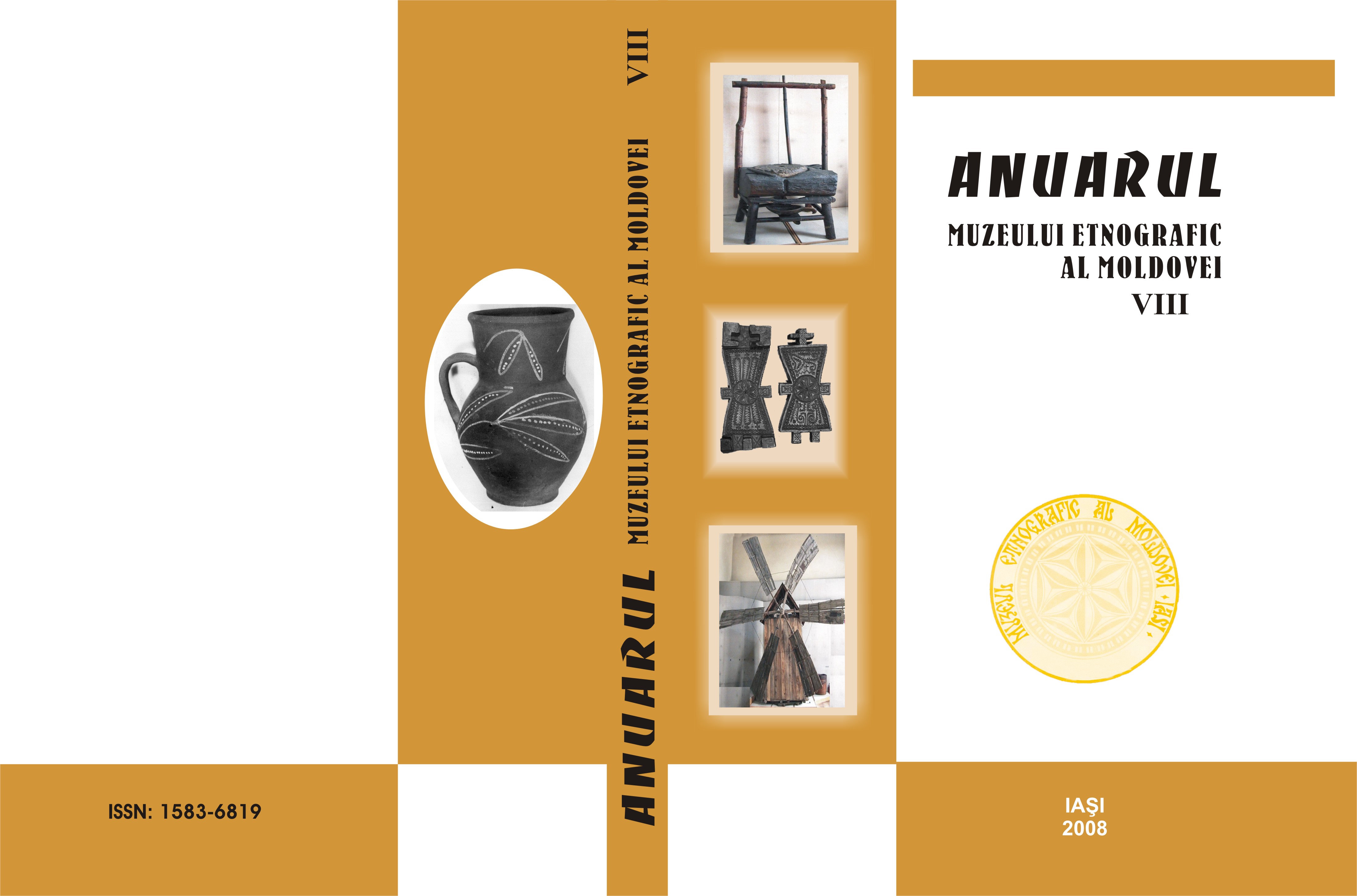
The study of agriculture in all its manifestations, over historical periods, requires a particularized approach and a methodology based primarily on an interdisciplinary research, required by the complexity of the proposed topic whose starting point is, mainly, the existence of ambiguities and numerous lacunae in the historical sources. Thus, a multidisciplinary treatment of agricultural tool terminology involves complex methods of investigation, frequently used in the social sciences and humanities. Our initiative is meant to be a viable working instrument, bringing together historical, archaeological, philological, linguistic, and ethnographic theories on the development of the agricultural nomenclature in the Romanian territory, over the centuries. The importance of the ideas spread within the Romanian cultural society and the relevance of the historical, linguistic and philological analyses are data of major significance that supplement the current research.Concerning our investigations on the research carried out so far, we notice that researchers from various fields (such as history, literature, linguistics, ethnography etc.) have established numerous and very complex connections between the development of the Romania agricultural nomenclature and historical changes in the ethnic-demographical, social-economical, political, cultural and religious spectrums which took place in the Carpathian-Danube area, during Late Antiquity and the Middle Ages.If so far researchers have focused more on the study of the phonetic aspect and word semantics, an important aspect is the determination of various modalities to convert language, under the action of external factors, thus determining the period in which there developed linguistic influences of foreign idioms. Phonetic investigations offer a special importance to the relative dating of the foreign words borrowed from the languages of the autochthonous populations having lived together over centuries in the intra- and extra-Carpathian Romanian space. Regarding the study of the Romanian agrarian and pastoral nomenclature, Romanian and foreign linguists argued for the Latin origin of the fundamental agricultural terms of the Romanians and, at the same time, they accepted its enrichment with terms coming mainly from the Slavonic languages, but also from Hungarian, German, Greek, Turkish etc.As a whole, the vocabulary used in agriculture has an important role. In particular, the complex and uniform character of the Romanian agrarian terminology legitimizes us to decipher the origin and understand the development and meaning of such words. At the same time, the study of Romanian agricultural and pastoral nomenclature brings up evidence and substantial data pertaining to the ancientness and continuity of the Romanians and of their language and traditional occupations that have not been interrupted by the civilization destroying factors (invasions, wars, pestilence, diseases, epidemics, natural disasters or climate changes). The fact that a number of important words from regular Latin were preserved and used in the construction of the basic Romanian agricultural language is another solid argument supporting our assertion.Houses, yards, tilled soil, fields, garden tools, and domestic animals are all emblems of sedentary peoples and indicate the continuity of agrarian life in a rustic environment throughout the Romanian Middle Ages.Living together with other populations having showed proclivity towards sedentary life, such as the Slavs, the Romanians took over foreign terms that were employed in parallel with the vocabulary already in use. Therefore, for certain aspects and matters of Romanian agrarian life there are one, two, or even more terms. In time, one of the notions substituted the others, reflecting an irrefutable reality that is, the social-economic, political and cultural continuous development of the Romanian archaic society, which was in strong connection to the technical progress and diversification of the equipment, agricultural practices and pastoral traditional household universe.Political dichotomy was not accompanied or preceded by ethnic and linguistic separations because the Romanians continued to exist on both sides of the Carpathian Mountains and beyond conventional boundaries that separated them, being united by language, shared traditions, Daco-Roman and Latin culture and confessional affiliation. In these circumstances, the civilization and language of the ancient Romanians transcended the centuries, giving us the opportunity to continue the archaic and ancestral customs within the same territorial limits, speaking the language similar to the one inherited from our predecessors.
More...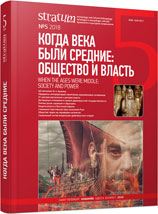
Keywords: Old Rus; oath; weapon; rings; Slavs; Old Russians; Scandinavians; Germans; Celts;
Origin of “rings and weapons” oath of 10th century’s Old Russians is addressed through a comparative analysis of Germanic and Slavic traditions. It was demonstrated that many Slavic peoples used weapons oaths. For some of them (Serbs, Bulgarians, Slovaks, Czechs) it is impossible to explain these oaths by Scandinavian influence. Celts used weapons oaths, too.A comparison between Slavic and Germanic traditions of weapons oaths demonstrates some essential differences in the key semantic and ritual details. The Old Russian weapons oaths are close to Slavic tradition.“Ring oath” existed in Slavic tradition of betrothal. An analysis of linguistic and ethnographic data allows us to suppose the for-Slavic origin of this ring oath. Besides, we can think that this is a reminiscence of a previously existed Slavic tradition of “ring oaths” in some other contexts as well. Celts and Romans use rings in betrothal too; Celts vow by torques. All these facts make us think that ring oaths were common for many Indo-European peoples too.A comparison between Old Russians’ and Germanic ring oaths shows an important difference, too. Namely, Old Russians vowed by taking their own rings off and putting them down on the ground. In contrast, Scandinavians (as well as all Germans) vow with sanctuary rings, putting them on during the ritual of oath.It looks like the Old Russians’ “rings and weapons” oath appeared as a result of their longtime contacts with Slavs.
More...